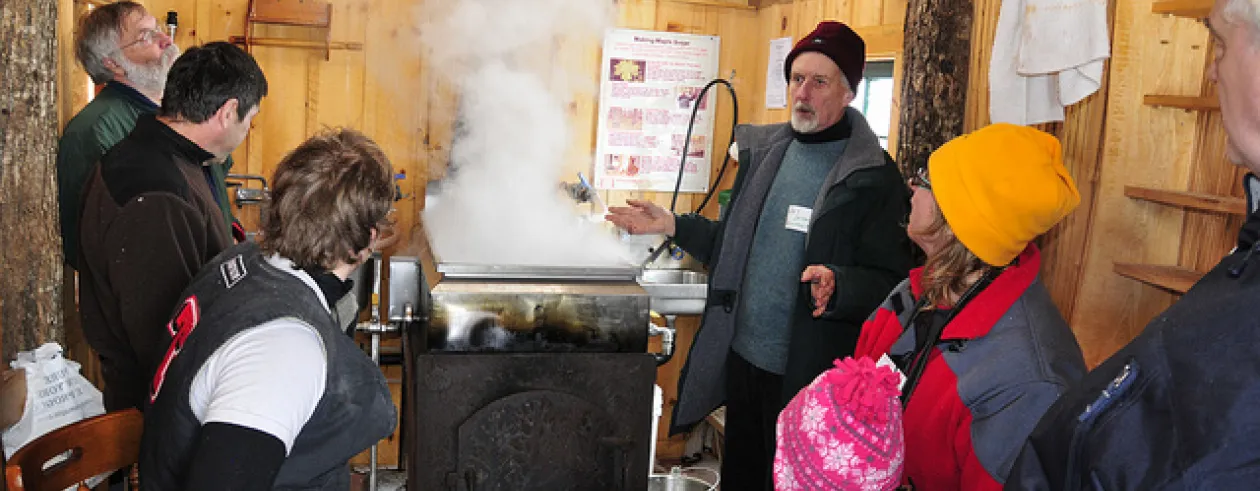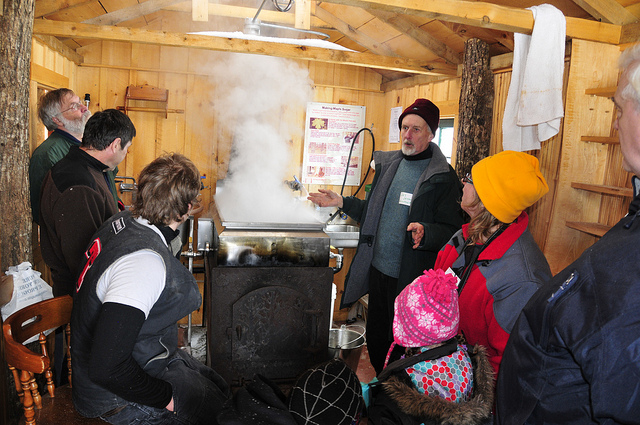
mmmmmaple
My first experience with the power of real maple came when, newly arrived in the Adirondacks, I put together my first gift package to friends living elsewhere. It included a jug of authentic maple syrup.
Future communications always included the current state of their jug; with the unspoken hint that refilling it would be another fine gift.
Like most folks, once my friends and I tasted the real thing, there was no going back. That's why most of our breakfast places offer real Adirondack maple syrup as an option.
March is the month when the magic happens.
Where does food come from?
The Wild Center started its Maple Program in 2011. They wanted to explore ways of connecting people to nature, and thus began a community maple sugaring program. They supplied taps, buckets, and instruction so the community could tap their own trees.
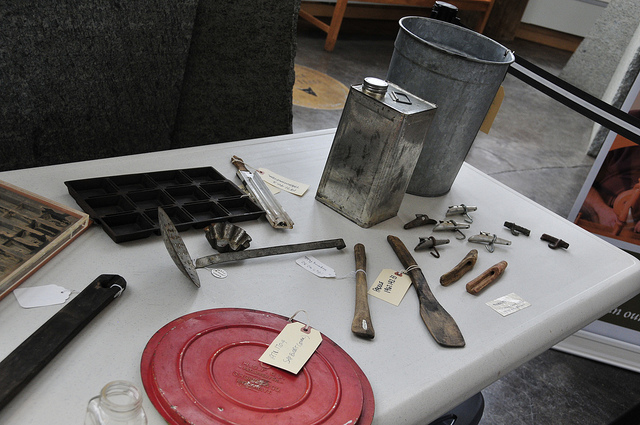
The concept proved to be so popular it led to a program and exhibit in The Wild Center itself, including installation of their own sugar shack for community use. From the proper way to tap the trees, to boiling up the sap, to sampling the result, it was a truly wild experience.
One of the great rewards of the program was how enthused children were about participating.
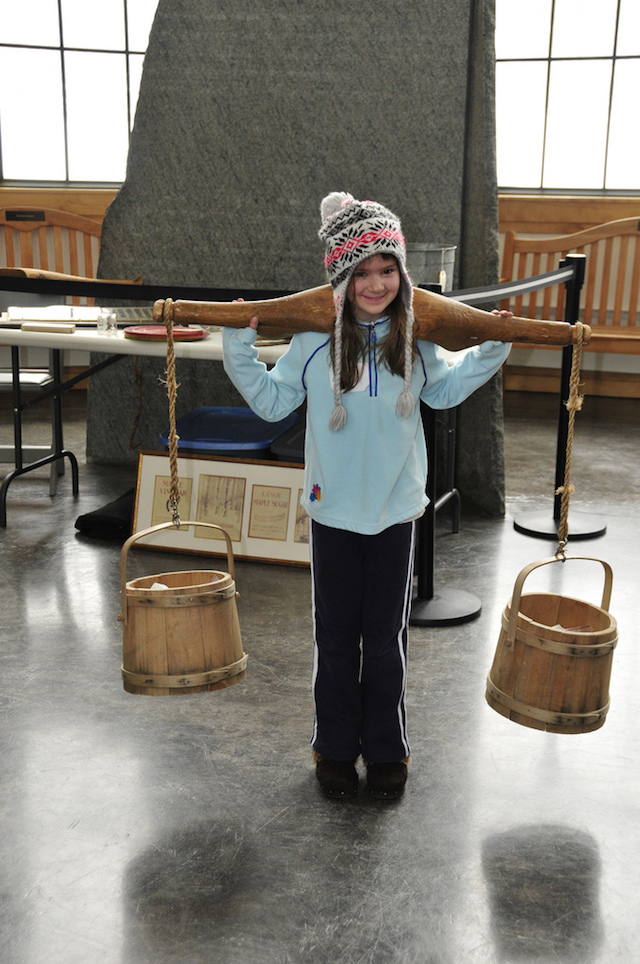
We live in an age where it can be difficult to remember that our food has its beginnings in nature. When children get so much of their food by it simply appearing out of a box or bag, it can be challenging to help them understand where food really comes from, and for how much of history it was not so neatly packaged.
The Wild Center's Maple Program takes everyone through the steps, from tree to finished product, in a way that is fun and also easily understood.
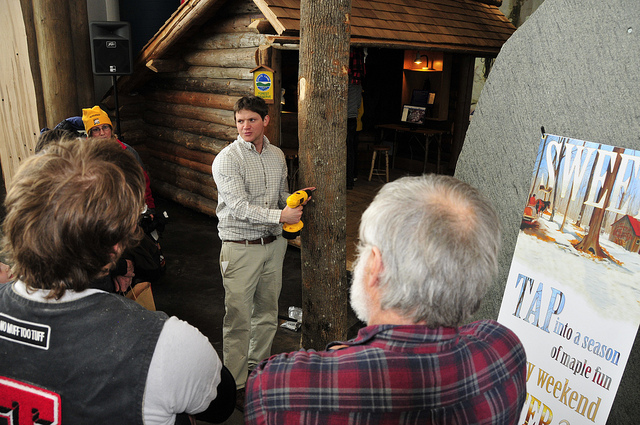
In 2017, the Maple Events include two Pancake Breakfasts on March 18 and 25, from 8:30–10:30 am. Registration is required. Come have breakfast at the Waterside Cafe in The Wild Center with pancakes, sausage, hot beverages, and local maple syrup. This includes many maple-themed programs and activities, and a tour of the on-site sugar shack.
The Sugar Shack Soiree is on March 18, from 4–8 pm. This is an outdoor party with live music, maple-flavored coffee and cold beverages, and hands-on sugaring participation. Discover the sap boiling process, what the different syrup grades mean, and how to chop the wood for the best fire. Guests are welcome to bring their friends and their own instruments. Cash bar and food will be available.
The scent of that steam from the sugar house is like nothing else in the world!
Why maple is special
Unlike table sugar, which is closer to a chemical than a food, maple in its many forms is not just sweet. It is a rich source of manganese and zinc. Both of these minerals serve as antioxidants, which help reduce cell damage from free radicals, and are vital elements in a healthy immune system.
While sugar is 100% a form of sugar, maple syrup is only about 60% sugar (depending on grade), making it a more healthful alternative in baking and cooking. And nothing good can be said about the mass-produced maple syrups, which are mostly High Fructose Corn Syrup, one of the worst choices of sweetener available, and contain 5%, or less, real maple syrup.
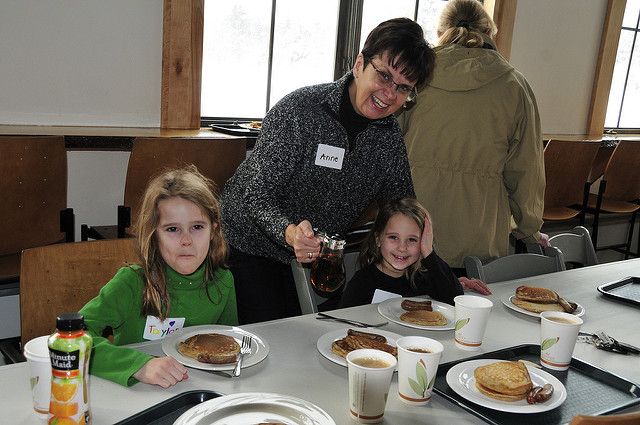
The United States in the colonial era used maple as their main sweetener from the beginning. What we know as "white sugar" was politically controversial (produced by slave labor in the West Indies), and was highly taxed and very expensive. It took the Industrial Revolution to make sugar cheap enough to displace maple. Even now, with renewed interest in maple, syrup production is about 20% of what it was in the early 20th century.
Maple syrup was the main sweetener used by the colonists since sugar from the West Indies was highly taxed and very expensive. As sugar became cheaper to produce, it began to replace maple syrup as a relied upon sweetener. In fact, maple syrup production is approximately one-fifth of what it was in the beginning of the 20th century. Low's Maple Sugaring House, located in nearby Piercefield, was the largest such operation in the world.
All of those classic North American desserts were actually once sweetened with maple.
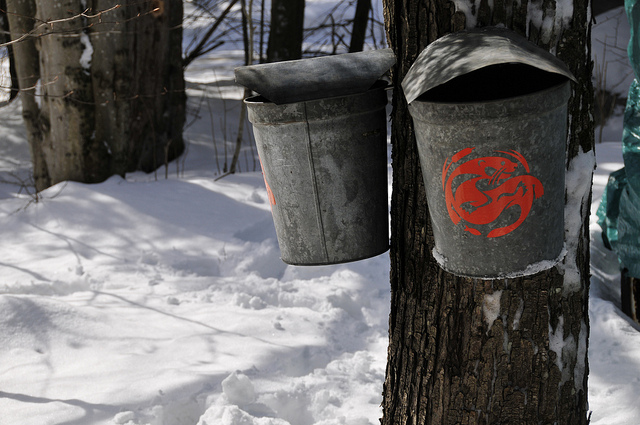
It couldn't be a more classic local flavor, since maple syrup-producing trees are only found in select regions of North America. This food resource was an ancient tradition of the Native Peoples, who regarded it as both a food, and a medicine.
The process has not changed; it simply uses different tools. They would slash the tree with tomahawks and use birch bark buckets. We use drills and metal. They would boil the sap with hot stones immersed into the buckets, or letting it freeze overnight, letting the water content ice up and be removed. We have a wood-burning sugar house to speed up the process.
But the products we produce are exactly the same.
Maple, the modern way
All of the advantages of maple are being re-discovered by modern cooks.
A popular way to glaze salmon is with maple: combine 3/4 cup of pure maple syrup with mustard, garlic, ginger, and fresh lime juice to taste. A great regional favorite is to combine our local landlocked salmon with local maple syrup for the ultimate in fresh.
A basic transposition of maple instead of sugar is to replace 1 cup of white sugar with 3/4 cup of maple syrup. To offset the extra liquid, reduce other liquid content by 3 tablespoons. Be watchful with baked goods: maple is already brown, and can cause the resulting product to brown more quickly.
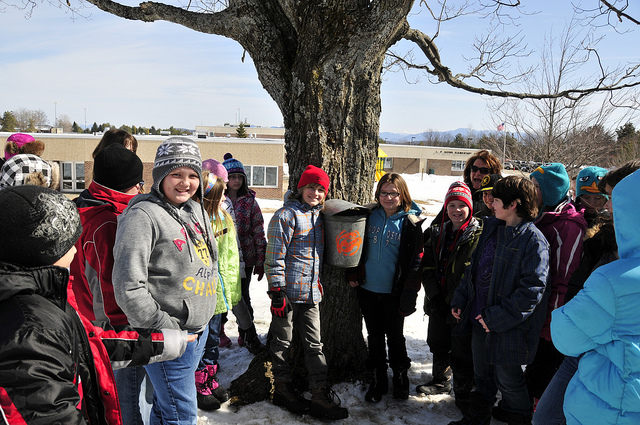
Maple flavors combine wonderfully with nuts, citrus, and game like duck, roasted ham, and of course, venison. While most people are acquainted with Grade A syrups for topping pancakes, waffles, oatmeal, and fruit, Grade B maple syrup has more intense flavor that can really show off in the right dish, and this grade is becoming more popular and available.
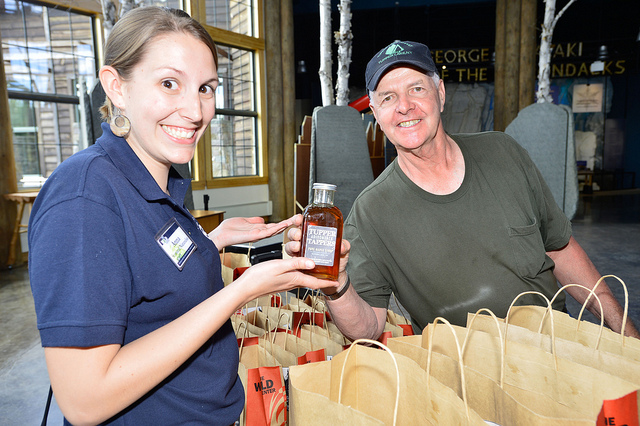
Enjoy maple locally at many of our dining establishments, where the option of "real maple" is available. Don't miss the seasonal favorite at Raquette River Brewing. They do a Maple Porter out of Tupper Tappers Maple. It's said that it goes with... everything.
Try exploring the wonders of maple. You might wind up like my friends: converts.
Interested in registering for the Pancake Breakfast? Call (518) 359-7800, or email: rsvp@wildcenter.org.
Sleep like a lumberjack in our lodging. Find more maple with our range of dining. Work up an appetite for those pancakes with some of our outdoor recreation.
Photos courtesy of the Wild Center unless otherwise noted.
Cabin fever fighters in this week's news:
